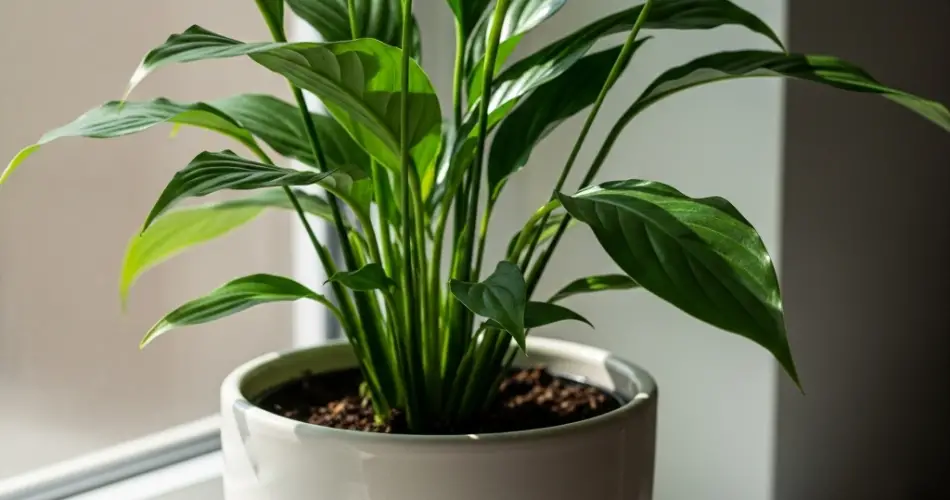Peace lilies (Spathiphyllum) are beloved houseplants known for their graceful white blooms and lush green foliage. They not only brighten up any space but also improve indoor air quality by filtering toxins. For apartment dwellers with limited space, peace lilies are a fantastic choice because they thrive indoors and require minimal care. This guide will help you understand how to nurture and “harvest” the beauty of your peace lily, even in a small apartment.
What Does “Harvesting” a Peace Lily Mean?
Unlike fruit or vegetable plants, peace lilies aren’t harvested for food but for their flowers and healthy foliage. “Harvesting” a peace lily means maintaining and encouraging the plant to produce new blooms and leaves regularly, so your plant stays vibrant and attractive all year long.
Why Peace Lilies Are Perfect for Small Apartments
Peace lilies are compact and adaptable plants that thrive indoors without needing direct sunlight. Their natural ability to purify air and low maintenance requirements make them ideal companions for small living spaces. Additionally, they don’t grow excessively tall, allowing them to fit comfortably on shelves, desks, or windowsills.
Choosing the Right Peace Lily for Your Space
When buying a peace lily, look for:
-
Healthy green leaves without brown edges or spots.
-
Strong, upright stems.
-
New buds or blooms to ensure it’s actively growing.
Smaller varieties like ‘Petite’ or ‘Domino’ are especially suitable for tight spaces.
Ideal Growing Conditions for Peace Lilies
To get the best blooms and healthy leaves, your peace lily needs the right environment:
-
Light: Peace lilies prefer bright, indirect light. Avoid direct sunlight, which can scorch their leaves. They can also tolerate lower light conditions, but flowering may be reduced.
-
Temperature: Keep your peace lily in temperatures between 65°F and 80°F (18°C to 27°C). Avoid cold drafts and sudden temperature changes.
-
Humidity: These plants love humidity. Mist leaves regularly or place a tray of water nearby to boost moisture levels.
-
Watering: Water when the top inch of soil feels dry. Peace lilies prefer moist soil but are sensitive to overwatering, which can cause root rot.
Step-by-Step Guide to Harvesting Peace Lily Blooms
1. Encourage Blooming
Peace lilies bloom naturally when they are healthy and comfortable. Here’s how to encourage blooms:
-
Maintain consistent moisture in the soil.
-
Fertilize monthly with a balanced, water-soluble fertilizer during the growing season (spring and summer).
-
Ensure your peace lily receives enough indirect light.
2. Removing Spent Blooms
Once your peace lily flowers fade, it’s important to “harvest” by removing them:
-
Use clean scissors or pruning shears.
-
Cut the flower stalk down to the base near the soil.
-
Removing old flowers directs the plant’s energy toward new growth and encourages more blooms.
3. Pruning Dead or Yellow Leaves
Remove any yellow or brown leaves promptly to keep the plant healthy and attractive:
-
Cut leaves at the base near the soil.
-
This prevents disease and pests and encourages the plant to produce fresh foliage.
Repotting Your Peace Lily for Continued Growth
Repotting every 1-2 years ensures your peace lily has enough room to grow and access to fresh soil nutrients:
-
Choose a pot 1-2 inches larger in diameter than the current pot.
-
Use well-draining, peat-based potting soil.
-
Gently loosen the root ball and place it in the new pot.
-
Water thoroughly after repotting and keep the plant in indirect light for a few days to recover.
Dealing with Common Problems in Apartments
Even in small apartments, peace lilies can encounter problems, but most are easy to fix:
-
Brown leaf tips: Usually caused by low humidity or over-fertilizing. Increase humidity and flush the soil with water occasionally.
-
Drooping leaves: Sign of underwatering or overwatering. Check soil moisture and adjust watering accordingly.
-
No blooms: May result from insufficient light or nutrient deficiency. Move the plant to a brighter spot and feed it regularly during the growing season.
-
Pests: Peace lilies are relatively pest-resistant but watch for spider mites and aphids. Treat with insecticidal soap if needed.
Tips for Maximizing Peace Lily’s Beauty in Small Spaces
-
Rotate your peace lily every week to ensure even growth on all sides.
-
Use decorative pots to complement your apartment décor.
-
Group peace lilies with other humidity-loving plants for a mini indoor garden.
-
Avoid placing peace lilies near heating or cooling vents, which can dry out the plant.
Final Thoughts
Harvesting your peace lily’s blooms and maintaining its lush foliage in a small apartment is simple with the right care. These elegant plants thrive with moderate light, consistent moisture, and regular pruning of spent flowers and leaves. By following these tips, you’ll enjoy a vibrant, blooming peace lily that enhances your indoor space all year round.
Whether you are a seasoned plant lover or new to indoor gardening, peace lilies offer a rewarding experience with minimal effort. Start nurturing your peace lily today and enjoy its natural beauty no matter how small your living space.



